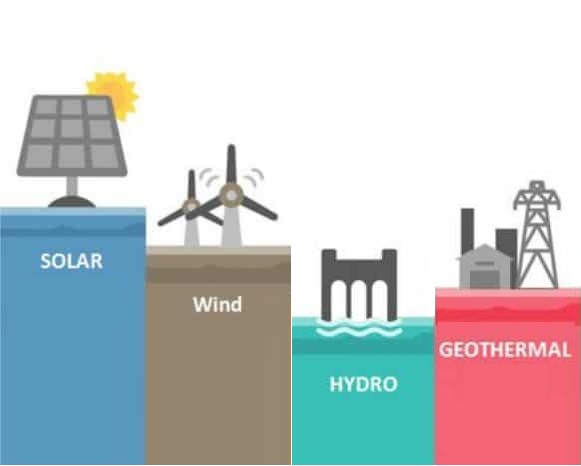
Since the Industrial Revolution, the energy mix of most countries across the world has become dominated by fossil fuels. This has major implications for the global climate, as well as for human health. 3/4th of global greenhouse gas emissions result from the burning of fossil fuels for energy. And fossil fuels are responsible for large amounts of local air pollution.
To reduce CO2 emissions and local air pollution, the world needs to rapidly shift towards low-carbon sources of energy – nuclear and renewable technologies.
Global energy-related carbon dioxide emissions rose by 6% in 2021 to 36.3 billion tons, their highest ever level, as the world economy rebounded strongly from the Covid-19 crisis.
We can offset this number by smartly switching to renewable energy.
Households, factories, companies and nations: we all depend on energy sources. But what type of energy sources do we use? How much energy do we consume? And what can we do to reduce our ecological footprint?
Responsible development of all of our rich renewable energy resources — solar, wind, water, geothermal, bioenergy & nuclear – is of utmost importance.
What Is Renewable Energy?
Renewable energy comes from sources or processes that are constantly replenished. These sources of energy include solar energy, wind energy, geothermal energy, and hydroelectric power.
Renewable energy is energy that has been derived from earth’s natural resources that are not finite or exhaustible, such as wind and sunlight. Renewable energy is an alternative to the traditional energy that relies on fossil fuels, and it tends to be much less harmful to the environment.
1. Solar Power
The potential for the sun to supply our power needs is huge, considering the fact that enough energy to meet the planet’s power needs for an entire year reaches the earth from the sun in just one hour. However, the challenge has always remained in how to harness and use this vast potential.
We currently use solar energy to heat buildings, warm water and power our devices. The power is collected using solar, or photovoltaic (PV), cells made from silicon or other materials. These cells transform sunlight into electricity and can power anything from the smallest garden light to entire neighborhoods. Rooftop panels can provide power to a home, while community projects like Game Changer Solar and solar farms that use mirrors to concentrate the sunlight can create much larger supplies.
As well as being renewable, solar powered energy systems are also clean energy sources, since they don’t produce air pollutants or greenhouse gases. If the panels are responsibly sited and manufactured, they can also count as green energy as they don’t have an adverse environmental impact.
2. Wind Power
Wind energy works much like old-fashioned windmills did, by using the power of the wind to turn a blade. Where the motion of these blades would once cause millstones to grind together to make flour, today’s turbines power a generator, which produces electricity.
When wind turbines are sited on land they need to be placed in areas with high winds, such as hilltops or open fields and plains.
3. Hydroelectric Power
Hydroelectric power works in a similar manner to wind power in that it is used to spin a generator’s turbine blades to create electricity. Hydro power uses fast moving water in rivers or from waterfalls to spin the turbine blades and is widely used in some countries. It is currently the largest renewable energy source in the United States, although wind energy is fast closing the gap.
If carefully managed, smaller hydroelectric power plants do not have catastrophic effects on the local environment as they divert just a fraction of the water flow unlike ‘mega dams’ projects.
4. Geothermal
Geothermal heat is heat that is trapped beneath the earth’s crust from the formation of the Earth 4.5 billion years ago and from radioactive decay. Sometimes large amounts of this heat escapes naturally, but all at once, resulting in familiar occurrences, such as volcanic eruptions and geysers. This heat can be captured and used to produce geothermal energy by using steam that comes from the heated water pumping below the surface, which then rises to the top and can be used to operate a turbine.
Geothermal energy is not as common as other types of renewable energy sources, but it has a significant potential for energy supply. Since it can be built underground, it leaves very little footprint on land. Geothermal energy is naturally replenished and therefore does not run a risk of depleting on a human timescale.
In Conclusion…
Renewable energy looks set to be a large part of the future energy mix, along with other clean sources such as nuclear power. The drive towards a greener future for power production is promoting a rise in job creation in renewable power industries such as solar and wind. Not only because we are emptying our non-renewable energy resources, but also because of the threatening global warming we have to switch to renewable energy and decrease our waste.
This journey will take decades, and we have to accept that at some point, we have to switch to natural gas or nuclear energy before we are able to use only the power of the Sun or our oceans.
